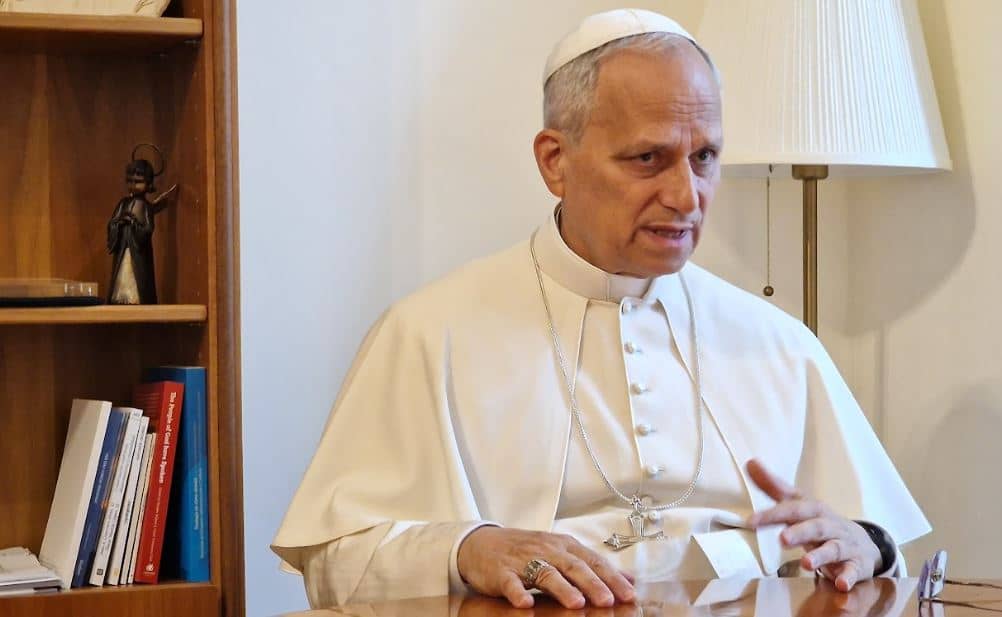[Editor’s Note: David Cloutier and Jana Bennett are the editors of Naming Our Sins: How Recognizing the Seven Deadly Vices Can Renew the Sacrament of Reconciliation. Cloutier is Associate Professor of Moral Theology/Ethics at Catholic University of America, while Bennett is Associate Professor of Theological Ethics at the University of Dayton. They spoke to Charles Camosy about the new book.]
Camosy: You both have a new edited book out to which I was blessed to contribute: Naming Our Sins: How Recognizing the Seven Deadly Vices Can Renew the Sacrament of Reconciliation. Can you tell us a bit about the genesis of this book–perhaps with attention to why you think the sacrament of reconciliation is in need of renewal?
Cloutier: Catholic moral theology has long been tied to the sacrament of reconciliation, but it is no secret that the collapse in the practice of the sacrament after the Second Vatican Council (1962-1965) has shown little sign of recovery. Without that sacramental practice, there aren’t parish-based sources of contact between the work theologians do – especially lay theologians – and everyday Catholic life.
Jana and I both recognized that a crucial aspect of the problem is the awkwardness and limitations Catholics like us experience when trying to name our sins in terms of what we call “code violations.” The form of the sacrament (rightly) requires us to confess our sins – we agree strongly that this is an essential part of the sacrament – but moral theology since the Council has sought to escape from this legalistic view of the moral life. Even St. John Paul II, in his major encyclical on moral life, Veritatis Splendor, emphasized the centrality of the call to discipleship, rather than only thinking about following or breaking commandments. Sometimes we do “break the rules,” but a lot of the time the ways we are unfaithful in our lives and don’t live up to our baptismal call look less specific. And just as importantly, moral theologians across the spectrum have recovered the importance of thinking of the moral life in terms of the virtues.
So the key “translation” task here is to take the richer language of the virtue/vice tradition, that gets at the deeper roots of the moral journey as Catholics, and help us “name our sins” in confessable ways. We reached out to some great colleagues to help, and were fortunate that all seven of our authors accepted our invitation to undertake this task, supplemented by the reflections of two experienced priests who share their experience of hearing confessions with the readers (of course, not sharing their actual confessions!)
Implied in the title is that we have lost our ability to recognize the seven deadly vices. How did we come to be in this place?
Bennett: We have come to this place for many reasons. In part, we’re here because we modern people don’t really quite believe we can sin. We rationalize actions as being good that, in previous ages, might have been named as sins. We think we’re basically nice most of the time (Christian Smith’s “Moralistic Therapeutic Deism” is a sociological description of how we think the main thing is to be nice.) That kind of rationalization was bolstered in the 1970s and 1980s by pop psychologies that saw sin as troubling for good self-esteem and ego development.
Similarly, many Catholics quite simply don’t believe that some things the Church names as sins, are sins. A key example is using artificial contraception, as discussed in Pope Paul VI’s 1968 encyclical Humanae Vitae. David and I discuss in the book how that encyclical is one that really takes the academic field of Catholic moral theology by storm, but it also greatly troubled many lay Catholics. In addition, maybe partly because of the response to Humanae Vitae, there’s been an expansion of perceived moral absolutes in our collective moral language, going far beyond contraception and sexual activity.
Now moral absolutes are the kinds of language we use to describe participation in political and economic life generally (for example, voting), not just limited to a few moral norms. That’s quite a change from the generations of moral theologians working in the earlier manualist tradition. While the manualists emphasized code violations in their naming of sins, their manuals also enabled priests to navigate the nuances of each person’s sins, to recognize mitigating factors.
A single-minded focus on absolutes doesn’t work well in the tradition of the seven deadly vices. That’s not because there aren’t absolutes, but because to live virtuously, people really have to do the hard work of discernment and reflection about their own lives – which is also in line with that call to discipleship that David discussed earlier. We can name that the seven deadly vices, broadly speaking, cause problems for us humans. What that looks like in our lives gets much more complicated. Sometimes it’s actually good to be angry, so while anger is a deadly vice, it doesn’t always have the characteristics of a deadly vice. So part of our book is trying to get readers to think deeply about the ways the vices take hold in their lives, in ways that might even be unexpected.
How does this book balance retrieval of the tradition on the deadly vices vs. addressing growing edges in moral theological research?
Cloutier: There’s two “growing edges” I’d want to highlight. Of course, all of our authors enter into their reflections by drawing on some of the greatest authors of the tradition, from Augustine to Dante to Aquinas. But a unifying theme across the essays – one I don’t recall that we planned – is an attention to the specific forms the manifestation of vice can take in contemporary social settings of everyday life. That is to say, there’s a sophisticated attention to how social contexts distinctively shape how these sins manifest, and thus the specific “sins” we need to name in the sacrament.
For example, Jason King identifies three contemporary social “scripts” that each manifest the vice of lust, and Beth Haile’s chapter pays particular attention to the complex forms gluttony can take in a culture where not only are we surrounded by food all the time, but we are also surrounded by messages about thinness and ideal body images. Your chapter on pride pays special attention to how polarized political partisanship can lead to unique sinful acts that manifest pride in a classic sense – and that Augustine or Aquinas couldn’t have thought of, since they did not live in media-saturated democracies!
To say “all ethics is social ethics” is not to deny individual responsibility – otherwise, why would we confess sins? – but it is to recognize that our habits and the sinful choices that proceed from them occur within structural and cultural forms. The other “growing edge” is that, like much moral theology today, the chapters are all written by laypeople whose own experience will hopefully reflect the day-to-day challenges of readers.
I’m sure the chapter on “Pride” is your favorite! But besides that one, did a particular chapter or insight stand out to you? Maybe both of you can answer this one?
Cloutier: Of course, editors are supposed to say, “they’re all great”!! And they are – every time we read these over on the way to publication, we were more impressed. I’d particularly note the chapter on sloth by Julie Hanlon Rubio. As other contemporary writers have also recognized, sloth is a particularly challenging vice to understand in a culture that prizes activity. Julie’s analysis not only helps all of us make sense of this, but also addresses the particular challenges that women face with this vice when they live in the context of an egalitarian society where they are often told that, if they “lean in,” they can “have it all.”
Bennett: Yes, I second David’s insights – I found this collection of essays to be impressive and I have learned much from my colleagues. I’ll highlight two insights here. One is simply the way that Beth Haile opened up the vice of gluttony, which we so often associate with overeating, to consider things like being overly “delicate” about our food preferences, but also how our eating habits relate to care of the environment. Another is Dana Dillon’s essay on envy, which examines the ways we “sorrow” at the good our neighbors receive. Her chapter included some terrific examinations of Dante and Shakespeare, and she reminds us yet again that because something good happens to a neighbor, that doesn’t mean something bad is happening to me. Yet so often we live in that worldview.
If Crux readers would like to learn more about the tradition on the deadly vices, what resources would you suggest?
Bennett: Thomas Aquinas lays out capital sins in Part II of his Summa Theologica, and it’s definitely worth reading his accounts of the deadly vices, maybe even as you read our book. Our authors do a good job, I think, of making Thomas accessible, but still being true to his theological language and discussion, so a person could definitely go more in depth with Thomas as desired. Also: Dante’s Inferno and C.S. Lewis’s Screwtape Letters. Most of our authors cited Rebecca DeYoung’s book Glittering Vices (Brazos Press, 2009), which offers a more philosophical discussion, but which still emphasizes the vices in contemporary context.
Crux is dedicated to smart, wired and independent reporting on the Vatican and worldwide Catholic Church. That kind of reporting doesn’t come cheap, and we need your support. You can help Crux by giving a small amount monthly, or with a onetime gift. Please remember, Crux is a for-profit organization, so contributions are not tax-deductible.

















